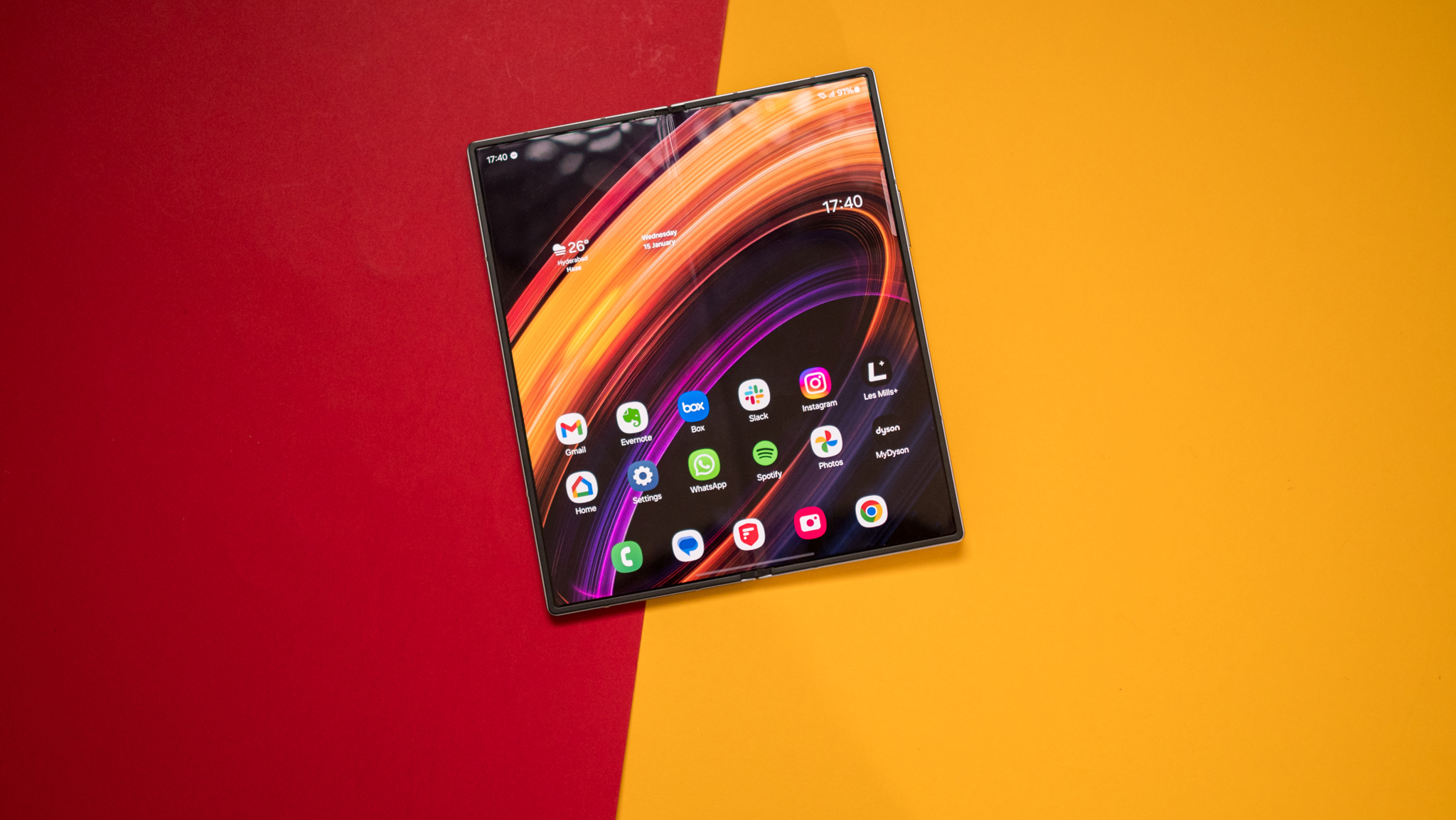ASUS ROG Phone 6D Ultimate preview: Unlocking a new dimension
ASUS's latest gaming phone is powered by the MediaTek Dimensity 9000+, and it is fantastic.
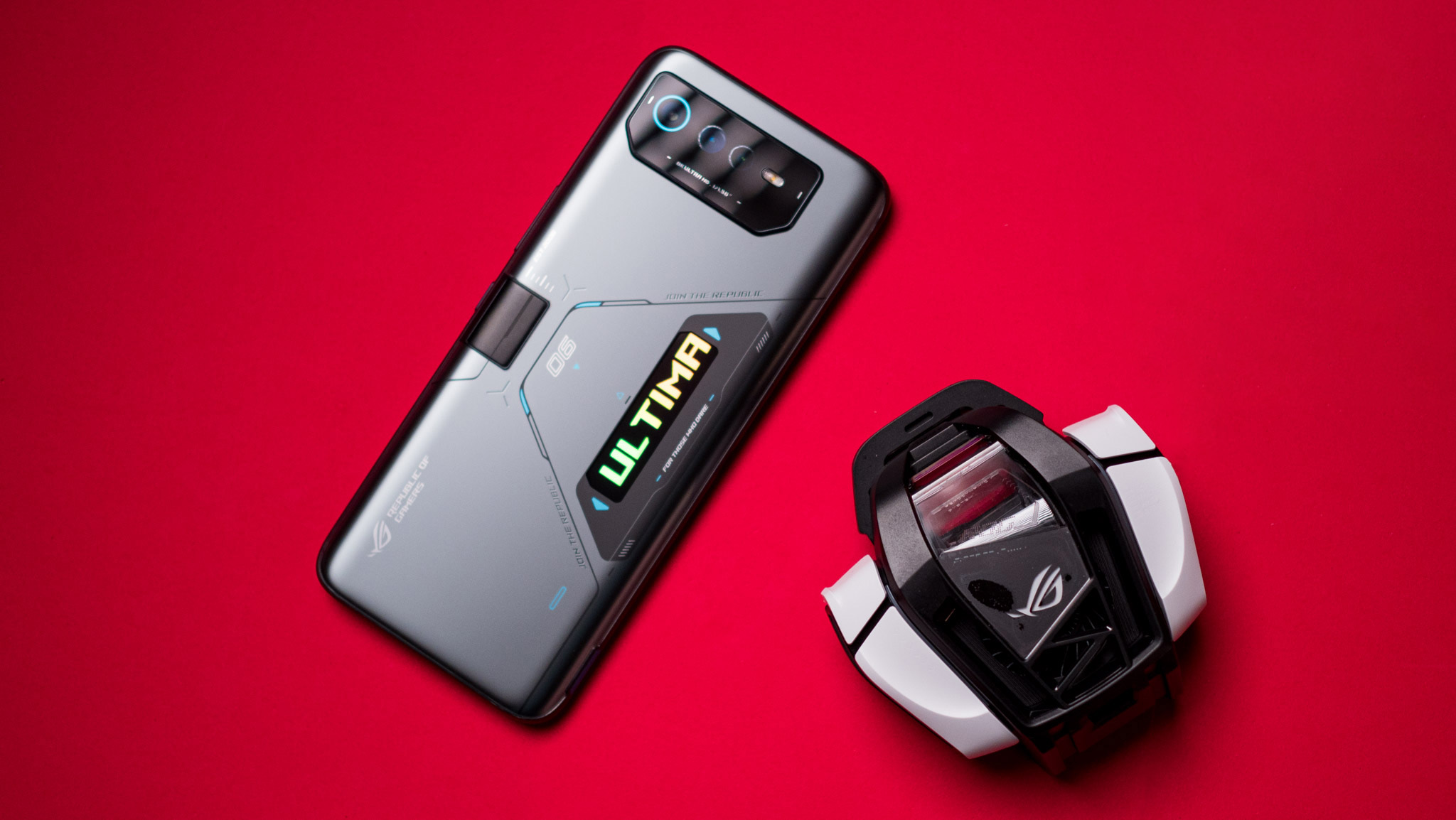
ASUS dominates the gaming phone market with its ROG Phone series, and a big part of that journey has involved Qualcomm. ASUS worked closely with Qualcomm to deliver the best possible hardware, and all of the devices thus far in the ROG Phone series featured flagship Snapdragon chipsets.
That dynamic is changing today with the introduction of the ROG Phone 6D series, the Taiwanese manufacturer's first gaming phones to feature MediaTek designs. ASUS is rolling out the ROG Phone 6D and the ROG Phone 6D Ultimate, with both phones powered by the MediaTek Dimensity 9000+, a slightly overclocked version of the standard Dimensity 9000.
This is a huge deal for MediaTek; while its Dimensity 1200 and 1300 series are now a mainstay on the best mid-range phones, it hasn't managed to secure any major design wins for its flagship chipsets — until now. While Xiaomi and Vivo released phones with the Dimensity 9000 this year, they have been limited to China, and ASUS is the first brand to bring MediaTek's latest and greatest to global markets. The fact that ASUS is using MediaTek on its ultimate gaming phone of the year is a strong endorsement.
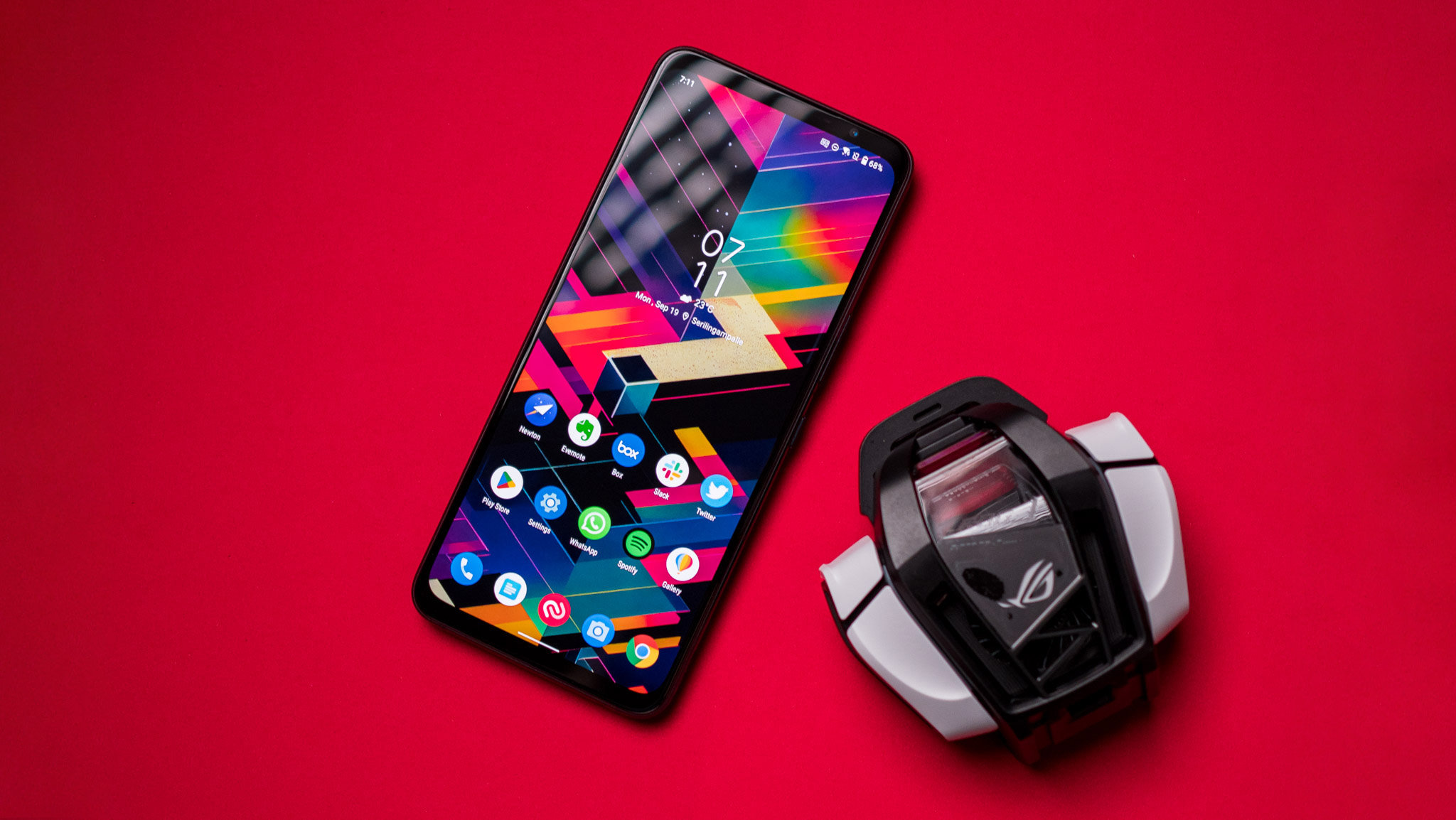
Talking about the switch from Qualcomm to MediaTek, ASUS says the move is designed to give its users more choice. The ROG Phone 6 series now counts four models in total: the standard ROG Phone 6 and Phone 6 Pro feature the Snapdragon 8+ Gen 1, and the ROG Phone 6D and 6D Ultimate run the Dimensity 9000+. The 6D and 6D Ultimate are meant to sit alongside the standard ROG Phone 6 phones, and those interested in what MediaTek has to offer in this category can pick up the Dimensity 9000+ variants.
Of course, there are a few caveats here. The main reason why we haven't seen more devices with the Dimensity 9000 or 9000+ has to do with North America, and the ROG Phone 6D and 6D Ultimate will not make their way to the region. For customers in the U.S. and Canada, the ROG Phone 6 and 6 Pro are the only options from ASUS this year on the gaming front.
With that out of the way, let's talk about the ROG Phone 6D Ultimate. The device is nearly identical to the ROG Phone 6 Pro, with two key differences: the Dimensity 9000+, and a new internal cooling system dubbed the AeroActive Portal. Given that the rest of the hardware is similar, I'm not going to do a full-fledged review — feel free to browse my 6,000-word Phone 6 Pro review if you're interested in learning about everything ASUS has to offer on its gaming phones this year.
An exciting new Storm Grey color option
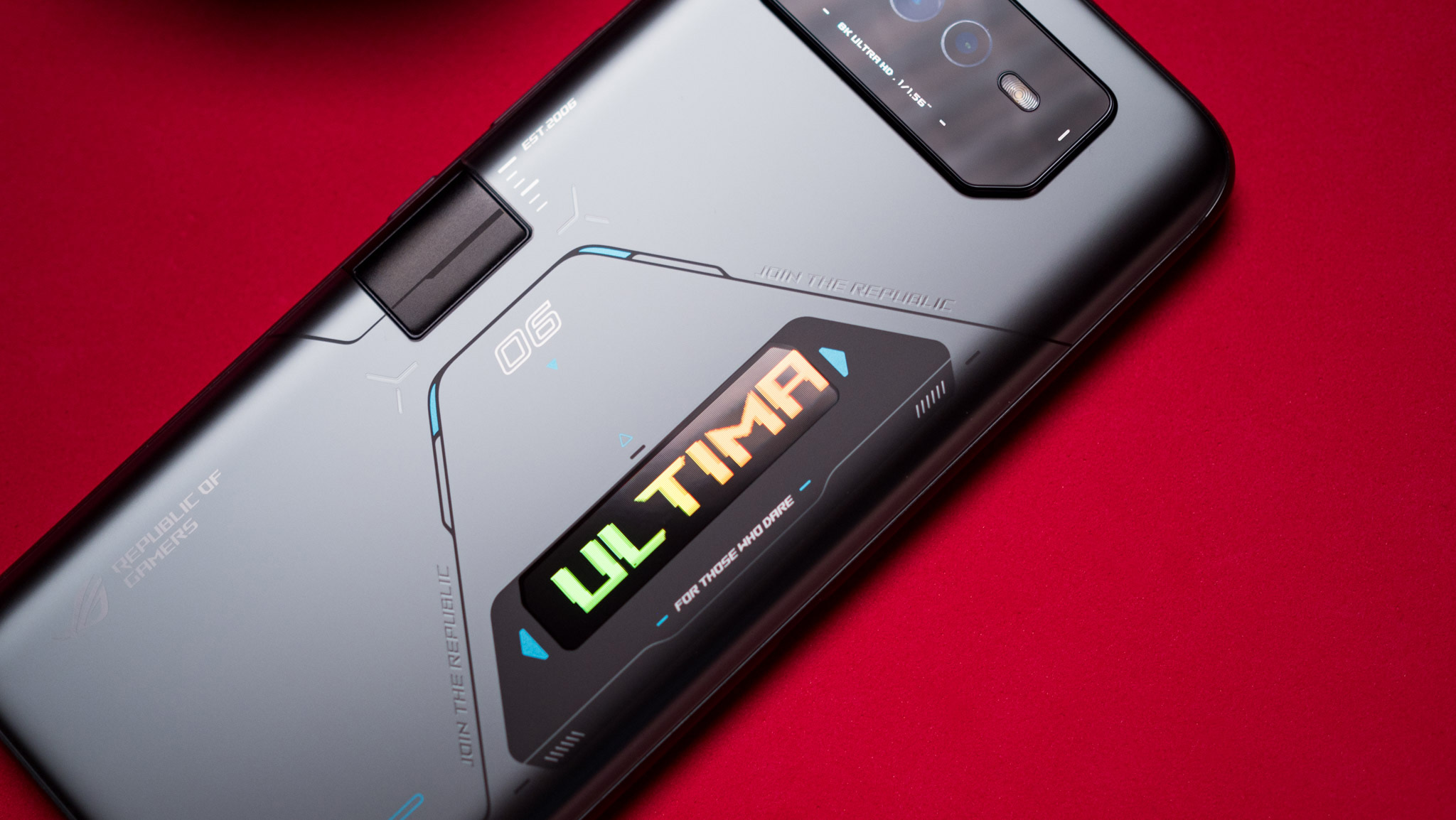
I'll get to the hardware additions in a bit, but first, a brief overview of the design changes. ASUS didn't make any noticeable alterations to the overall design language, but the ROG Phone 6D Ultimate features a new Storm Grey color that looks really good.
Be an expert in 5 minutes
Get the latest news from Android Central, your trusted companion in the world of Android
The grey hue combined with the matte finish makes the device stand out just that little bit more over the white aesthetic of the ROG Phone 6 Pro, and ASUS says that both the 6D and 6D Ultimate will be available in just the grey color variant.
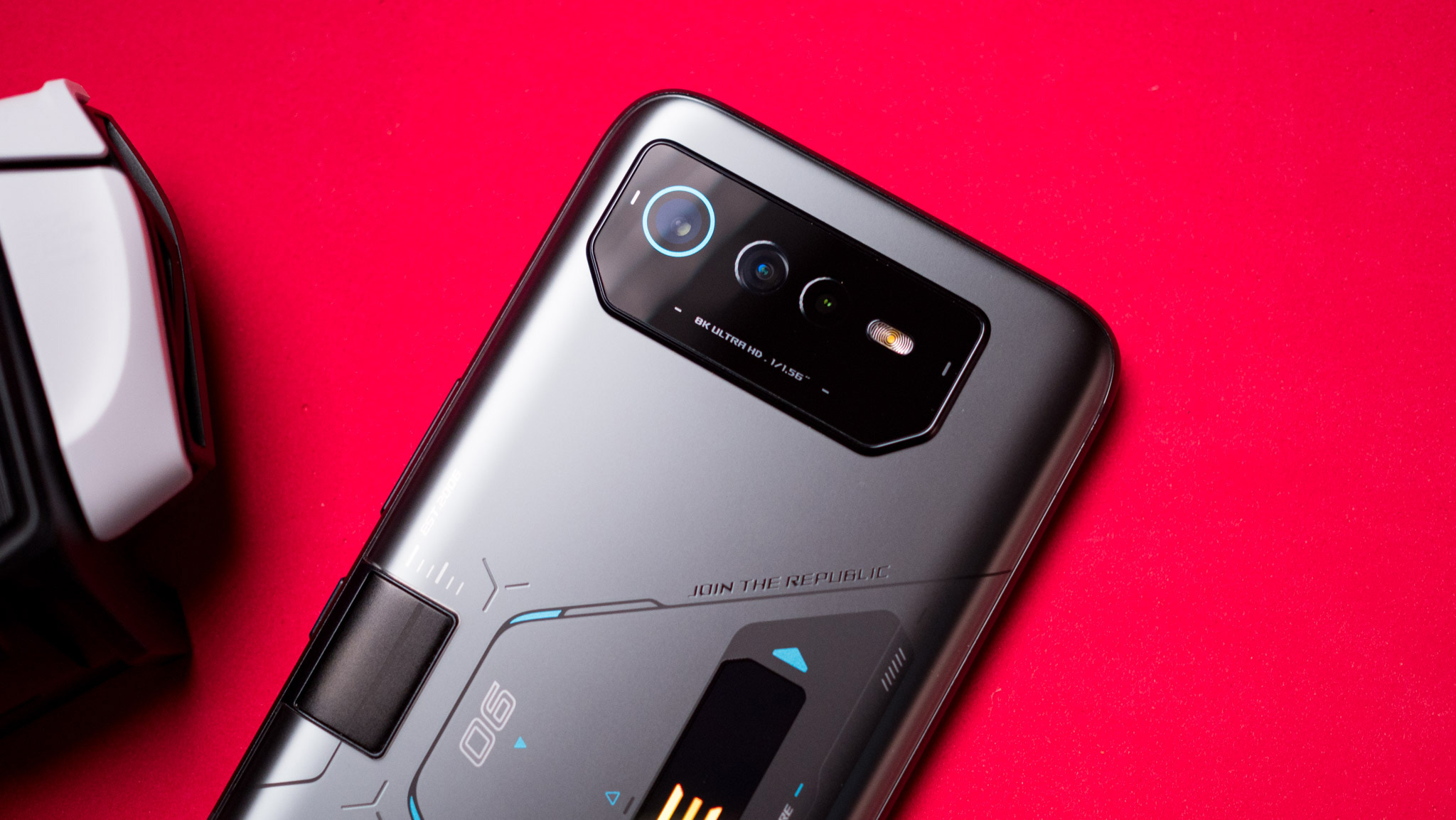
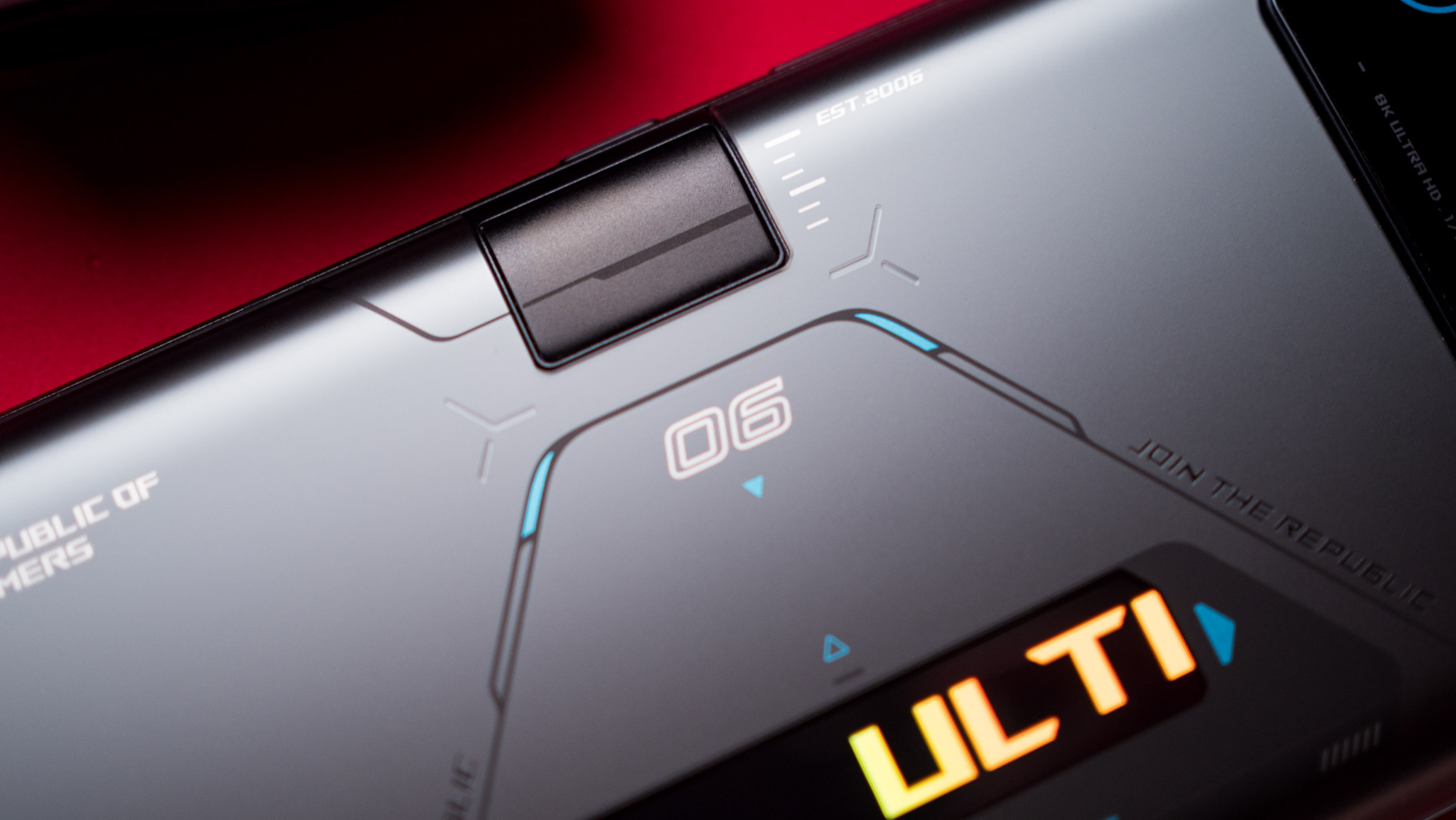
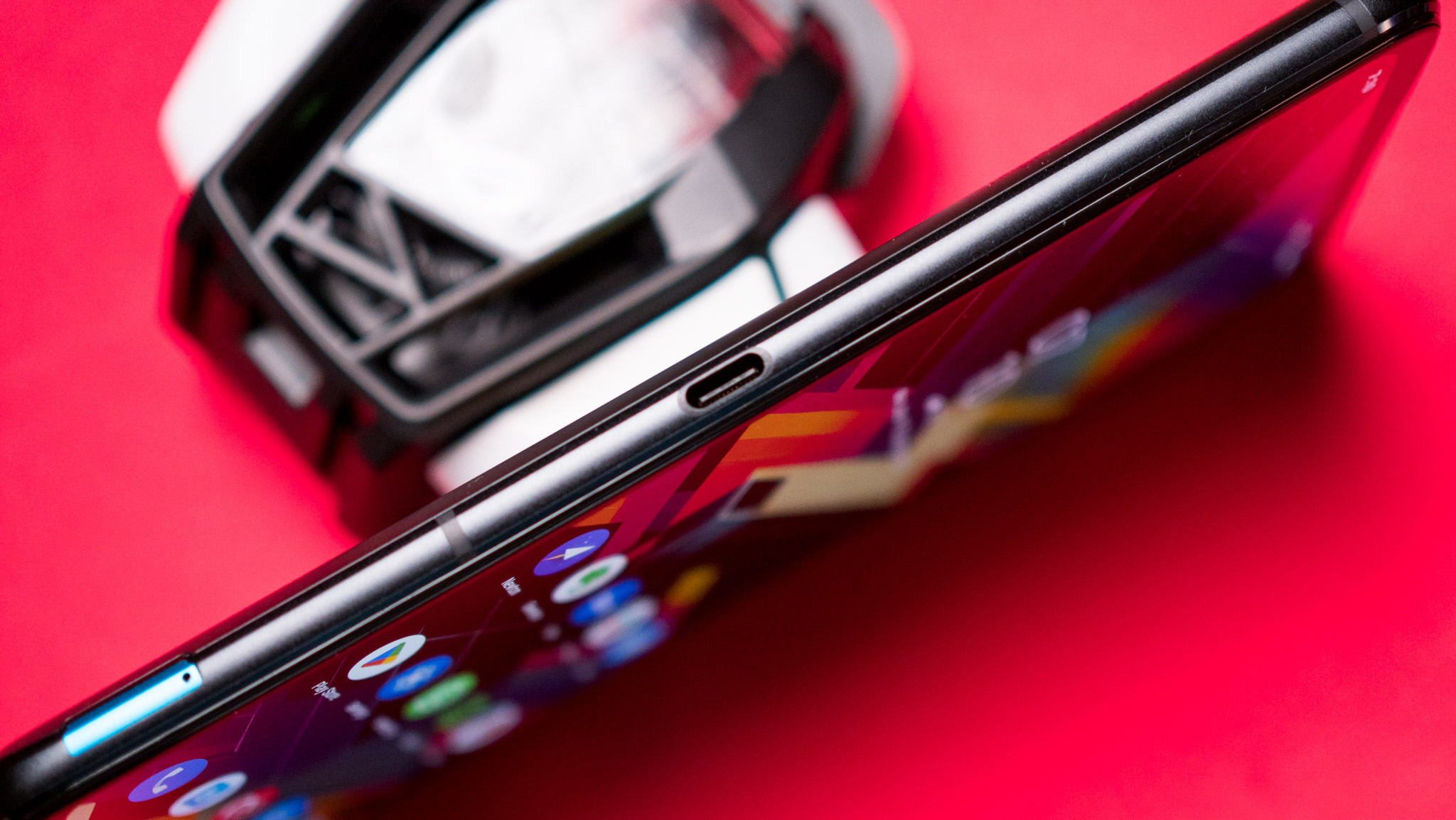
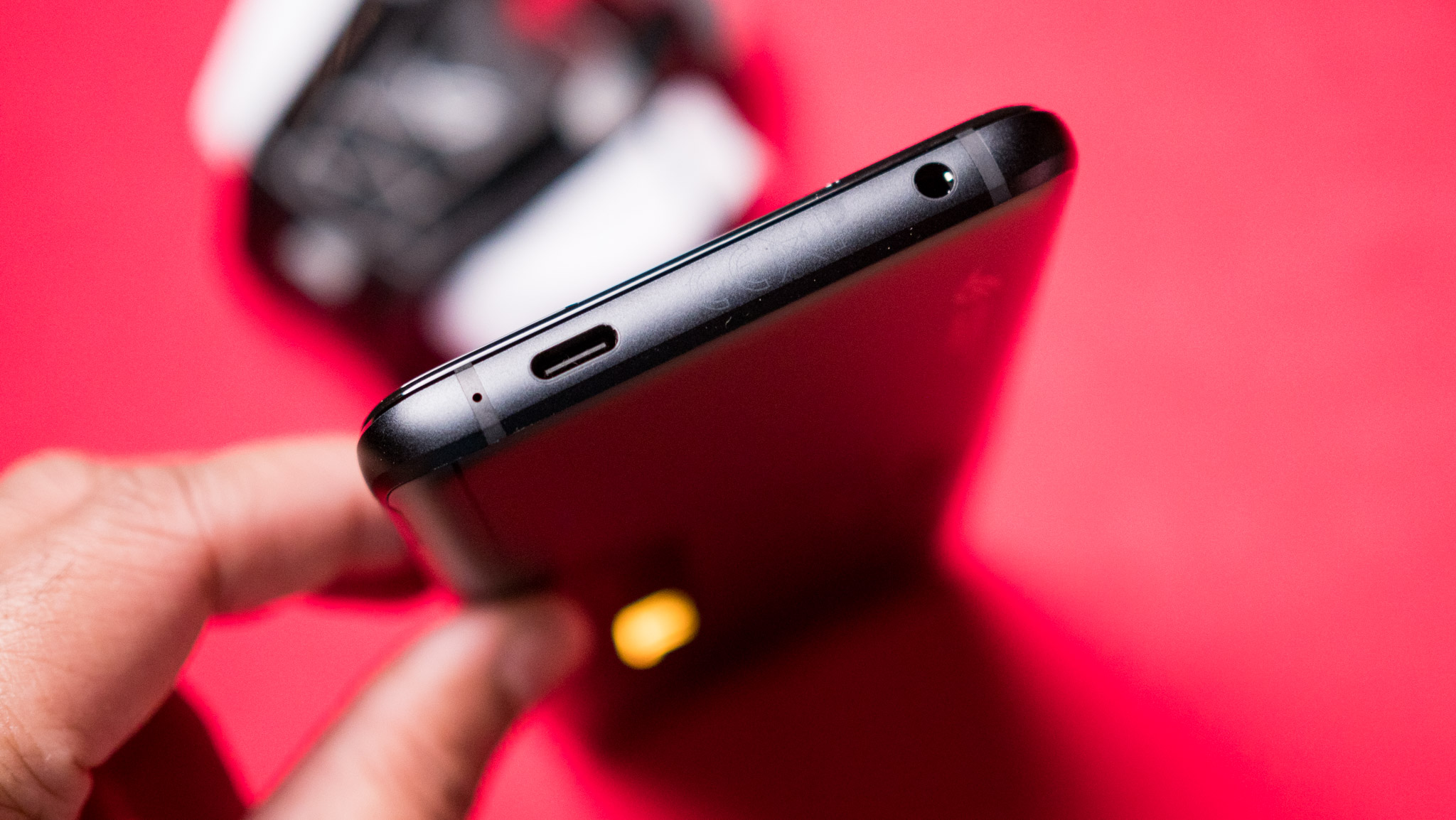
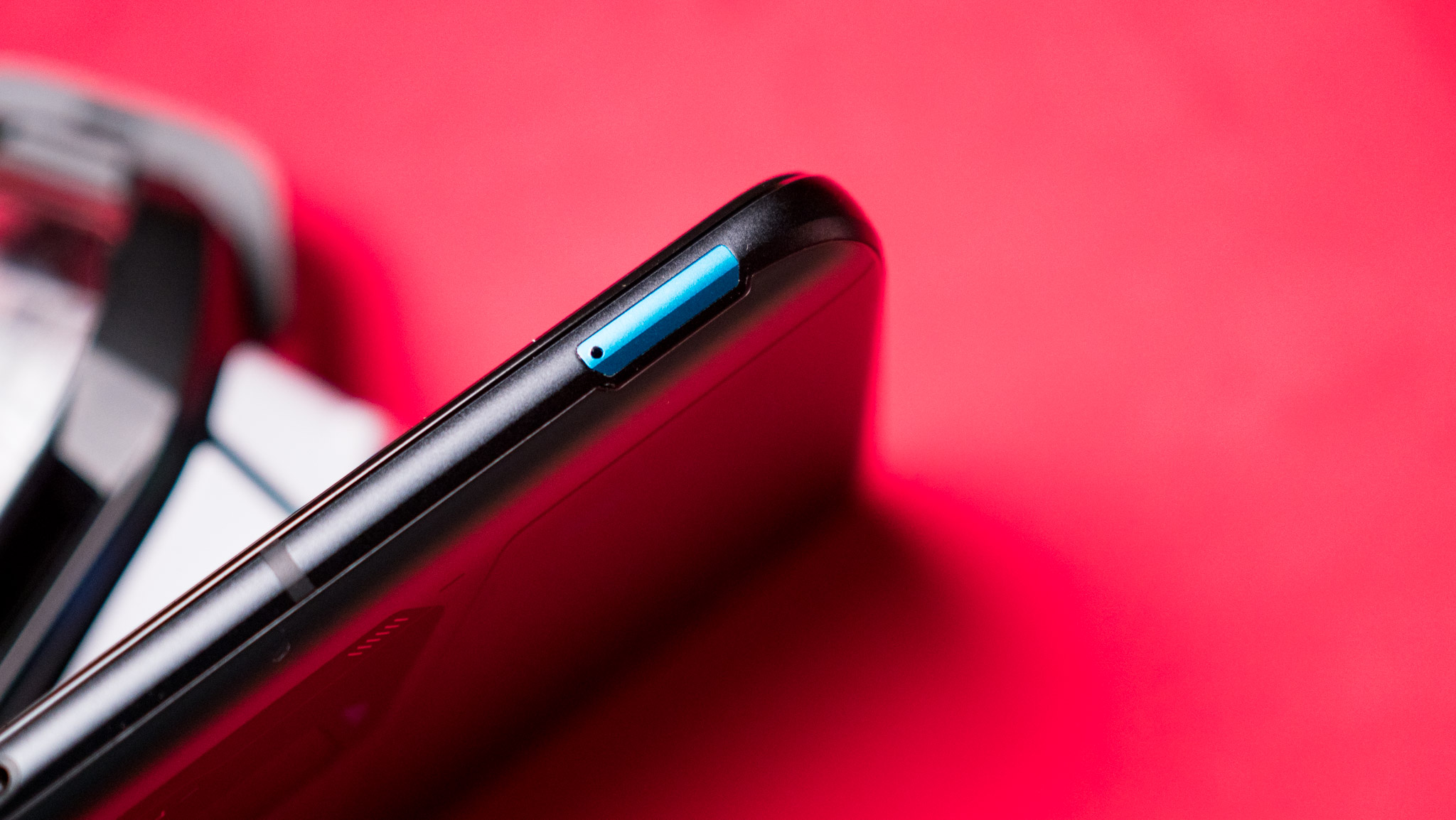
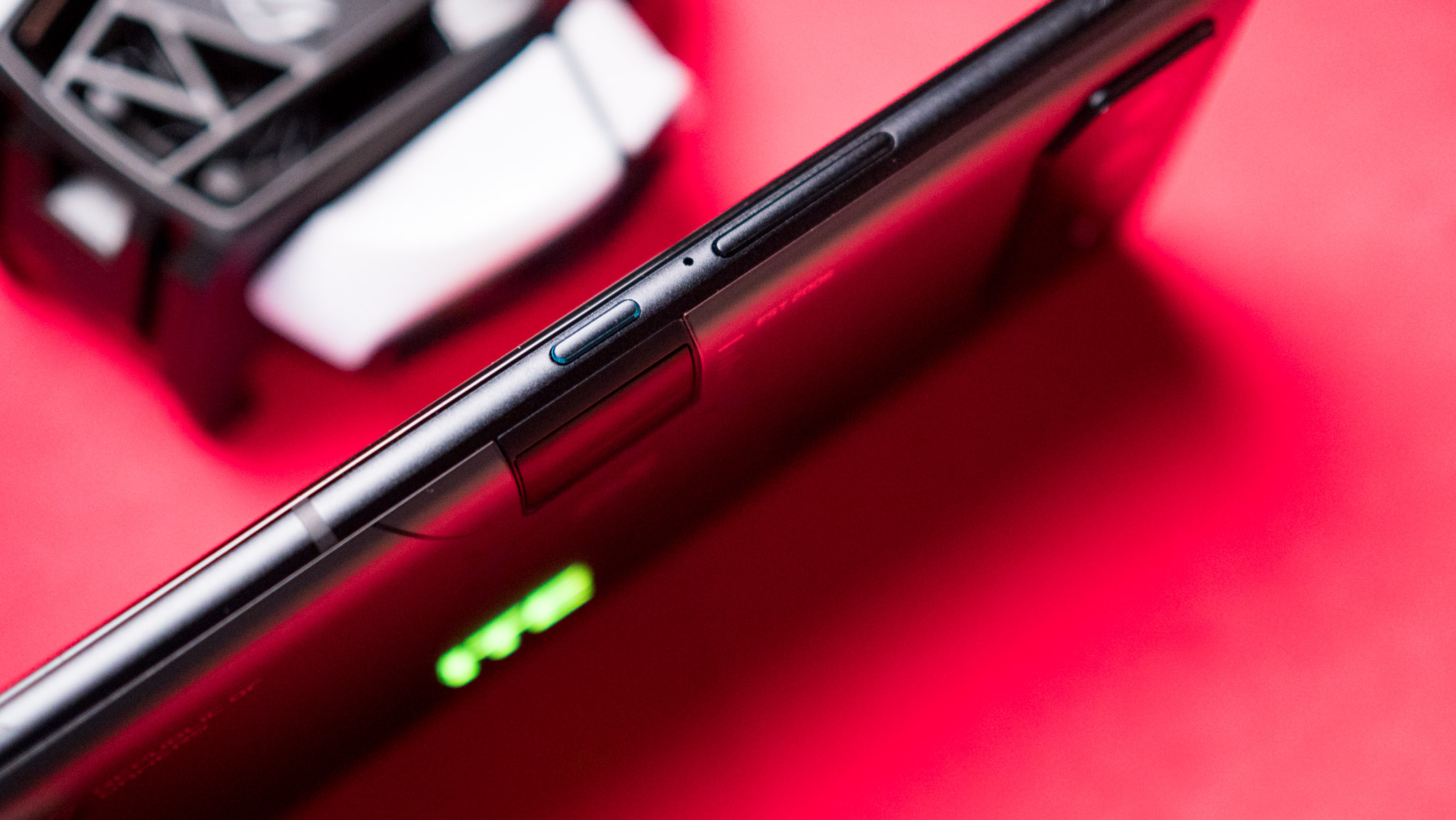
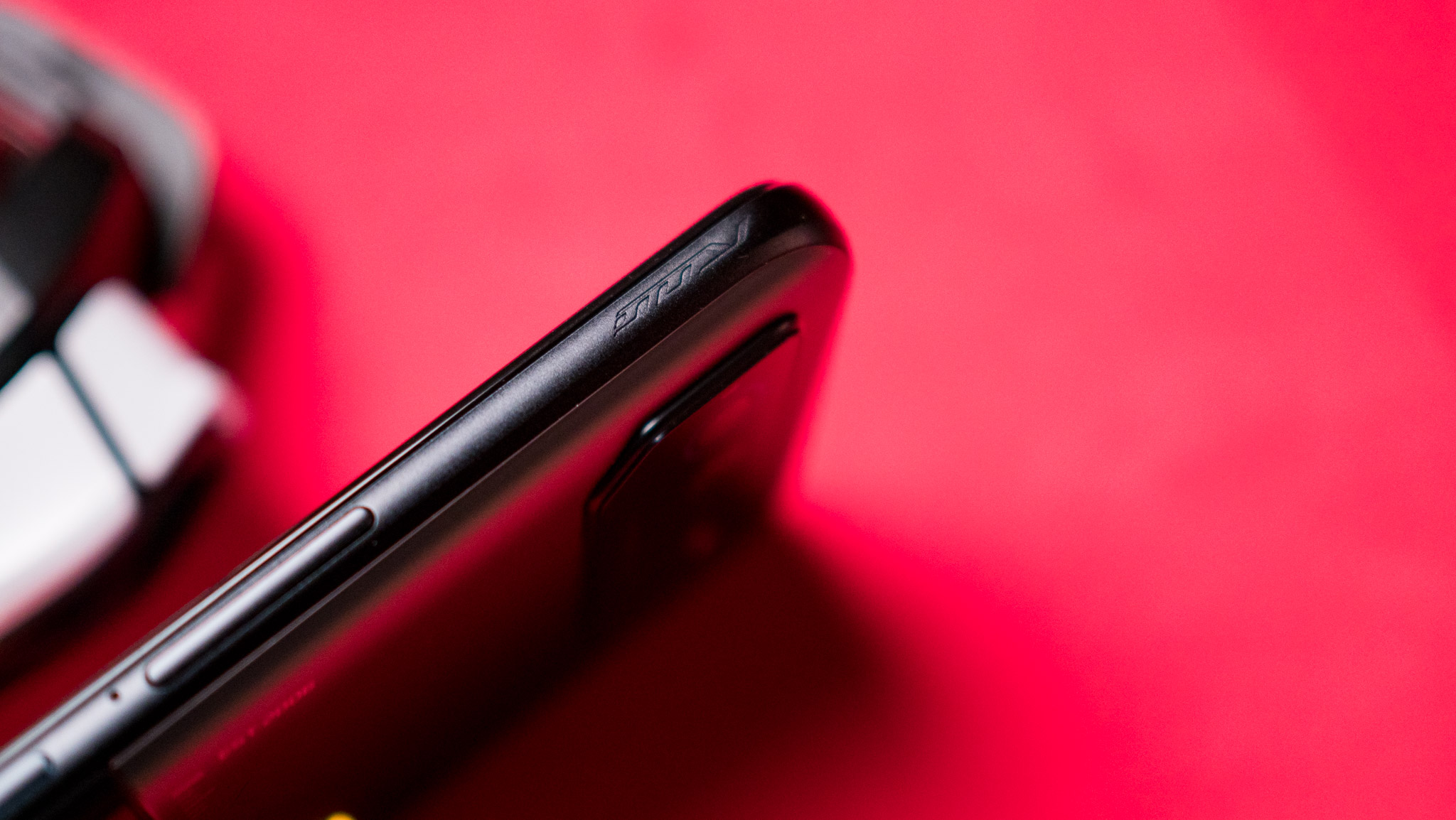
The ROG Vision secondary screen at the back is intact as well, and it is a nifty way to view incoming calls when the phone is lying face-down or see the battery charge level. Of course, you can also add your own images or text and customize it just that little but more.
The Phone 6D Ultimate gets the same 12 x 16 dual speakers along with a 3.5mm jack, and the onboard audio is more than sufficient for casual gaming. You'll find the ultrasonic AirTriggers on the right, and these are great for assigning in-game actions. Like the ROG Phone 6 Pro, the 6D Ultimate is tall and heavy, but the weight is balanced well, and it feels great to hold in-hand.
The side-mounted USB-C port is great if you need to charge the phone while gaming, and the AeroActive Cooler and other accessories use this port for drawing power.
MediaTek Dimensity 9000+ is a true powerhouse
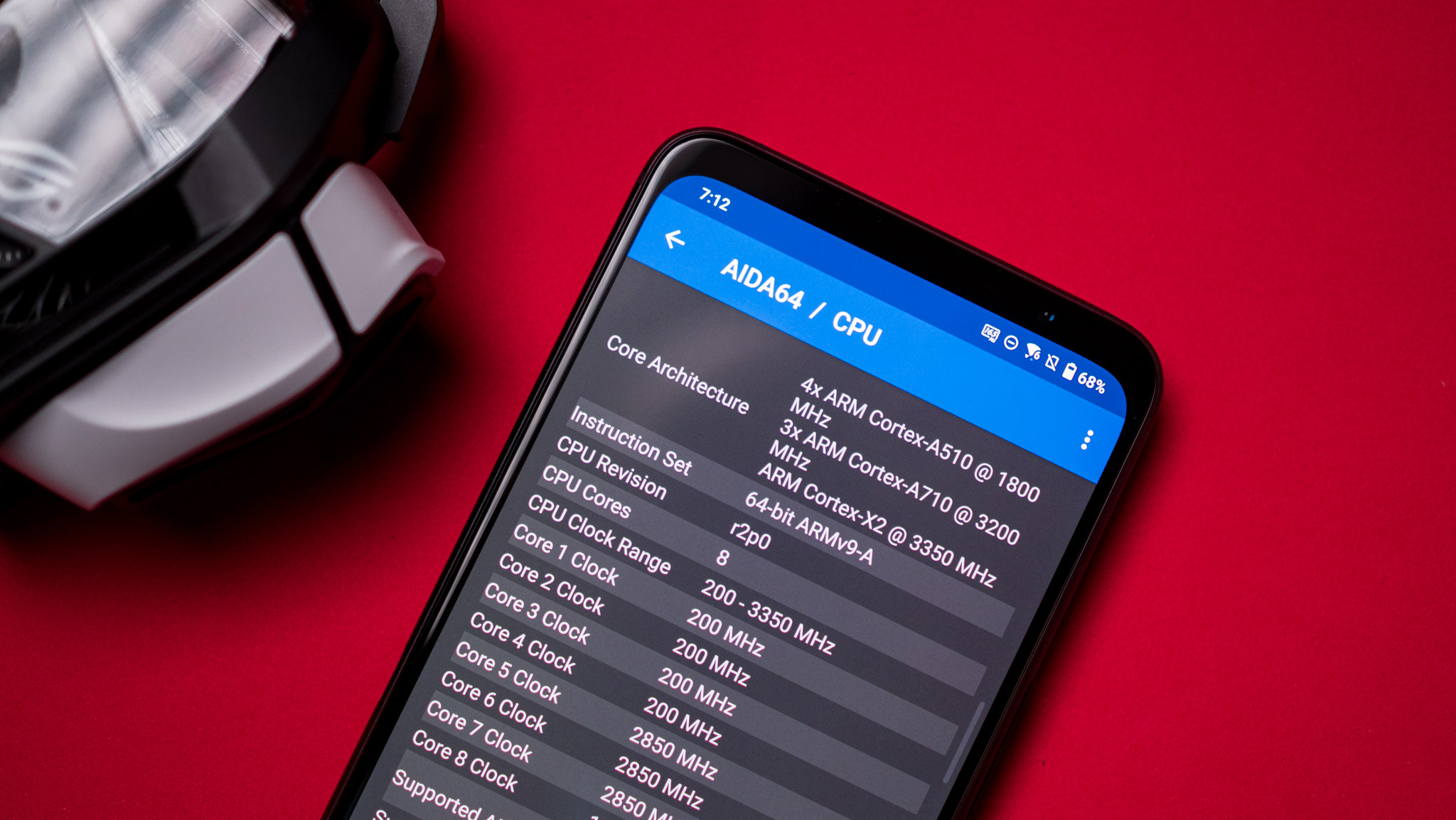
The ROG Phone 6D Ultimate is the first gaming phone powered by the Dimensity 9000 or 9000+, and it is phenomenal. While Qualcomm went with Samsung for the manufacture of the Snapdragon 8 Gen 1, MediaTek chose TSMC for both the Dimensity 9000 and 9000+, giving it a distinct edge.
While both Samsung and TSMC use a 4nm manufacturing node, TSMC delivers much better efficiency gains, leading to a massive uptick in battery life. Qualcomm course-corrected a few months ago by switching to TSMC for the Snapdragon 8+ Gen 1, and the results speak for themselves — the 8+ Gen 1 absolutely demolishes the 8 Gen 1 for energy efficiency, as evidenced by the Zenfone 9.
The Dimensity 9000+ holds its own against the best that Qualcomm has to offer.
Here's a high-level overview of what the Dimensity 9000+ has to offer. It has a Cortex X2 core that does the heavy lifting during gaming, and that's joined by three Cortex A710 cores and four Cortex A510 cores. There's a Mali-G710 GPU with ten cores, and although Arm's efforts in this area haven't been on par with what Qualcomm offered with its Adreno series, that's no longer the case — the Mali-G710 absolutely holds its own against the 8+ Gen 1's Adreno 730.
What's particularly interesting about the ROG Phone 6D Ultimate is that the Cortex X2 core goes up to an insane 3.35GHz, more than MediaTek's stated 3.2GHz frequency; this is essentially an overclocked Dimensity 9000+. The Cortex A710 cores cross the 3.0GHz barrier as well — going up to 3.2GHz — and the A510 cores are at 1.80GHz.
What does this translate to in real-world use? Well, the ROG Phone 6D Ultimate is an absolute gaming monster, delivering lag-free frame rates even in demanding titles. You won't see any slowdowns whatsoever here, and it blazes past the best Android phones for multi-core workloads.
| Category | Galaxy S22 Ultra | ROG Phone 6D Ultimate | ROG Phone 6 Pro |
|---|---|---|---|
| CrossMark (Overall) | 999 | 1116 | 1123 |
| Productivity | 980 | 1181 | 1113 |
| Creativity | 990 | 1001 | 1132 |
| Responsiveness | 1087 | 1292 | 1126 |
| Geekbench 5.1 (single-core) | 1005 | 1396 | 1306 |
| Geekbench 5.1 (multi-core) | 3152 | 4586 | 3654 |
| 3DMark Wild Life (score) | 6923 | Maxed out | Maxed out |
| 3DMark Wild Life (FPS) | 41.5 | Maxed out | Maxed out |
| 3DMark Wild Life Extreme (score) | 2098 | 2641 | 2817 |
| 3DMark Wild Life Extreme (FPS) | 12.55 | 15.8 | 16.8 |
The Geekbench scores highlight just how much of a difference the higher frequencies make, with the Dimensity 9000+ delivering the best overall scores of any Android device I've seen. In fact, the multi-core scores are on par with the A15 Bionic.
The Dimensity 9000+ lags behind the Snapdragon 8+ Gen 1 in 3DMark, but the difference isn't as evident in real-world use. Playing the same title on the Phone 6 Pro and 6D Ultimate at the same settings, I didn't see any noticeable difference, and the thermals were nearly identical. And of course, the AeroActive Cooler is very effective at ensuring the device doesn't throttle.
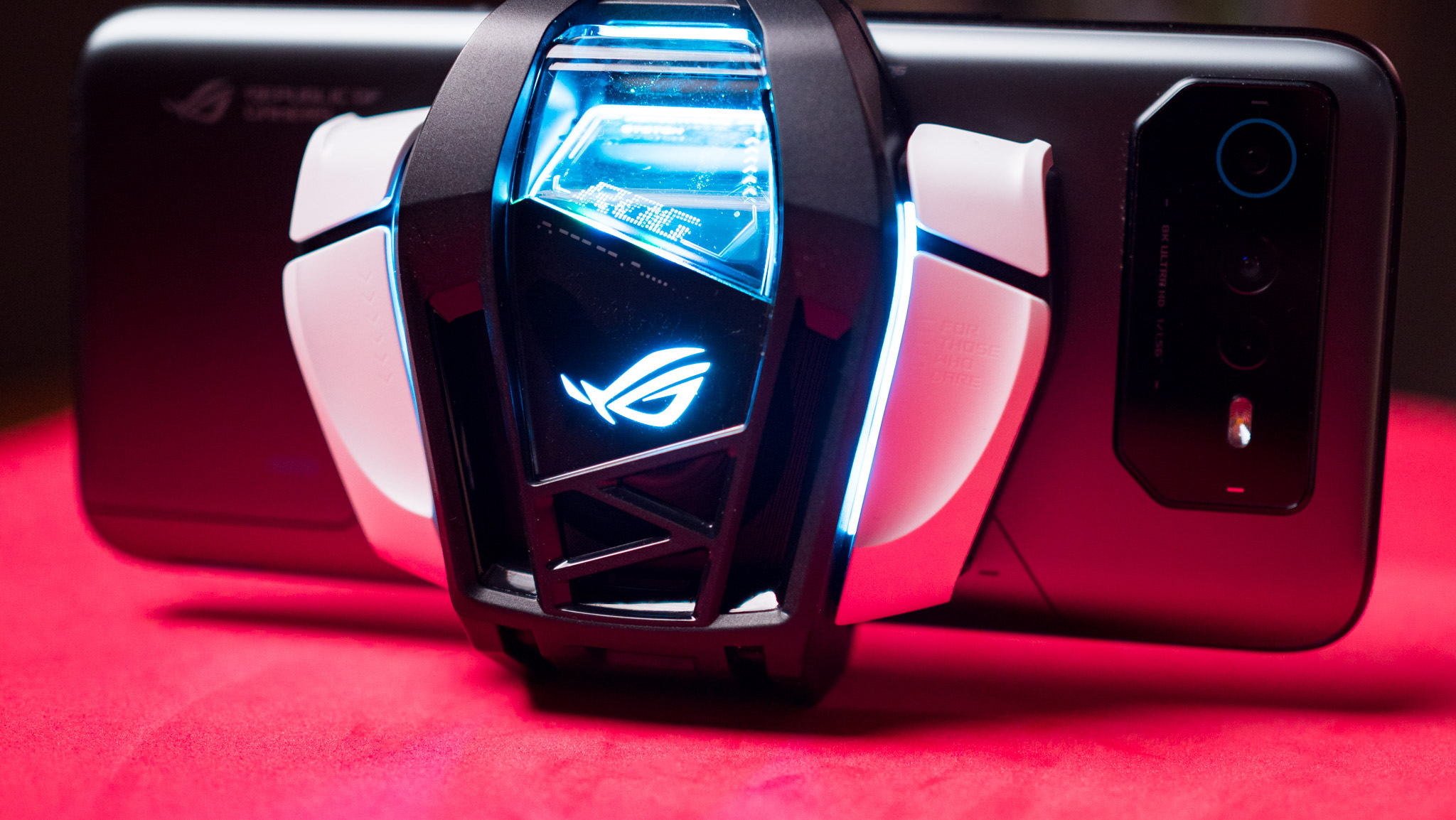
The Phone 6D Ultimate comes with 16GB of LPDDR5X RAM and 512GB of UFS 3.1 storage as standard, and it includes all the added hardware customizability that's a mainstay on ASUS's gaming devices. You'll find these settings in Armoury Crate, and you can adjust power profiles, change settings for individual games, and so much more.
Now, the Phone 6 Pro has more RAM at 18GB, and ASUS says that this is because the Ultimate edition is using LPDDR5X instead of LPDDR5, and that the maximum DRAM module for LPDDR5X is currently 16GB. Honestly, this is overkill as there's no situation where active RAM use crosses 10GB.
AeroActive Portal delivers big thermal gains
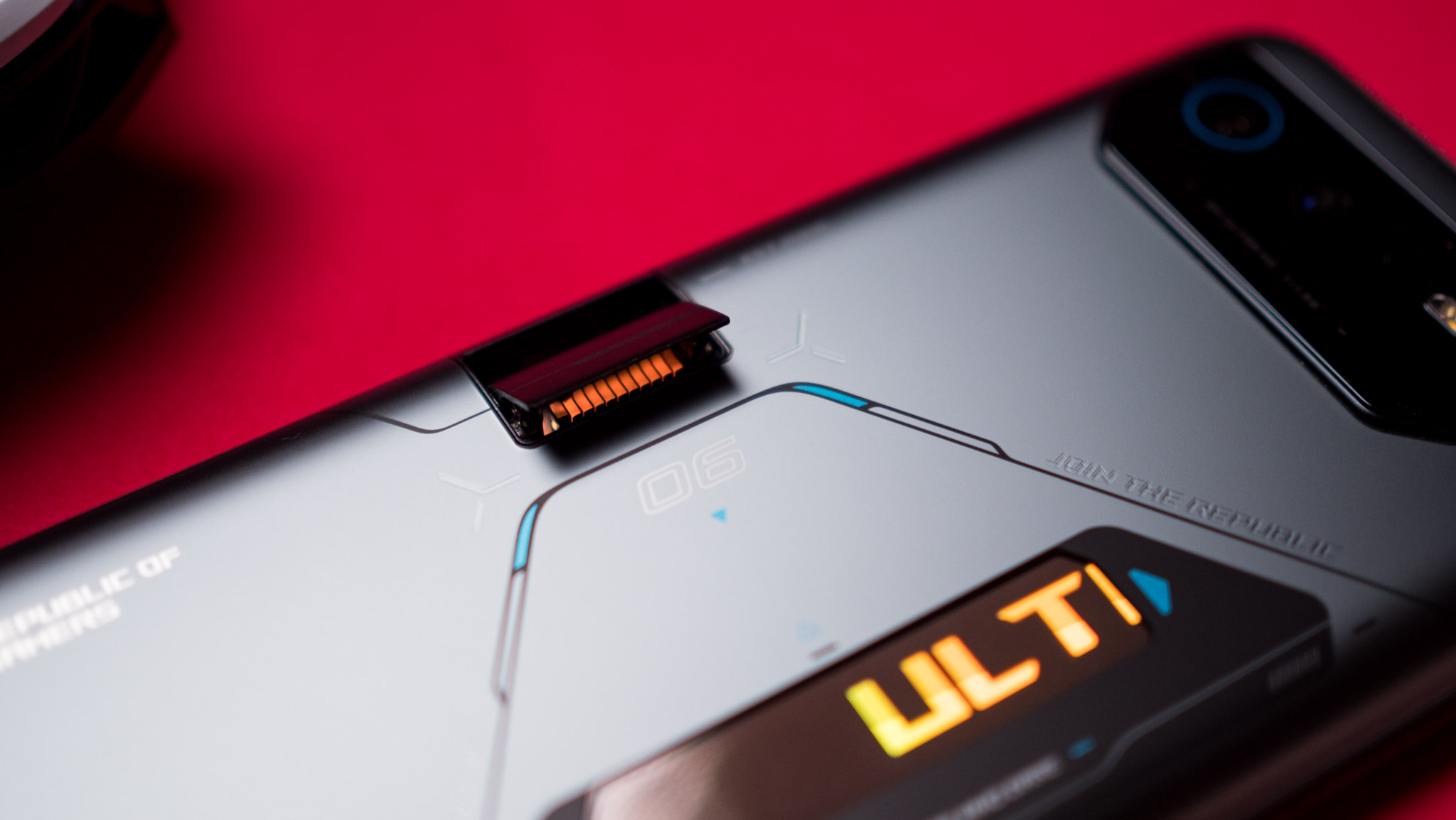
A unique addition to the ROG Phone 6D Ultimate is the new internal cooling system — dubbed the AeroActive Portal — that kicks in when the AeroActive Cooler is connected. It allows the cooler to deliver cold air to the innards of the device, with cooling fins that connect to the vapor chamber.
Think of it as a slot at the back of the 6D Ultimate that opens to allow cool air to flow into the device, thereby ensure it doesn't throttle during extended gaming sessions. The AeroActive Portal contains over 50 components, and ASUS notes that the hinge is made of die-cast liquid metal and is designed to work up to 40,000 times without any issues. ASUS says the motor design was influenced by the Zenfone Flip motorized cameras.
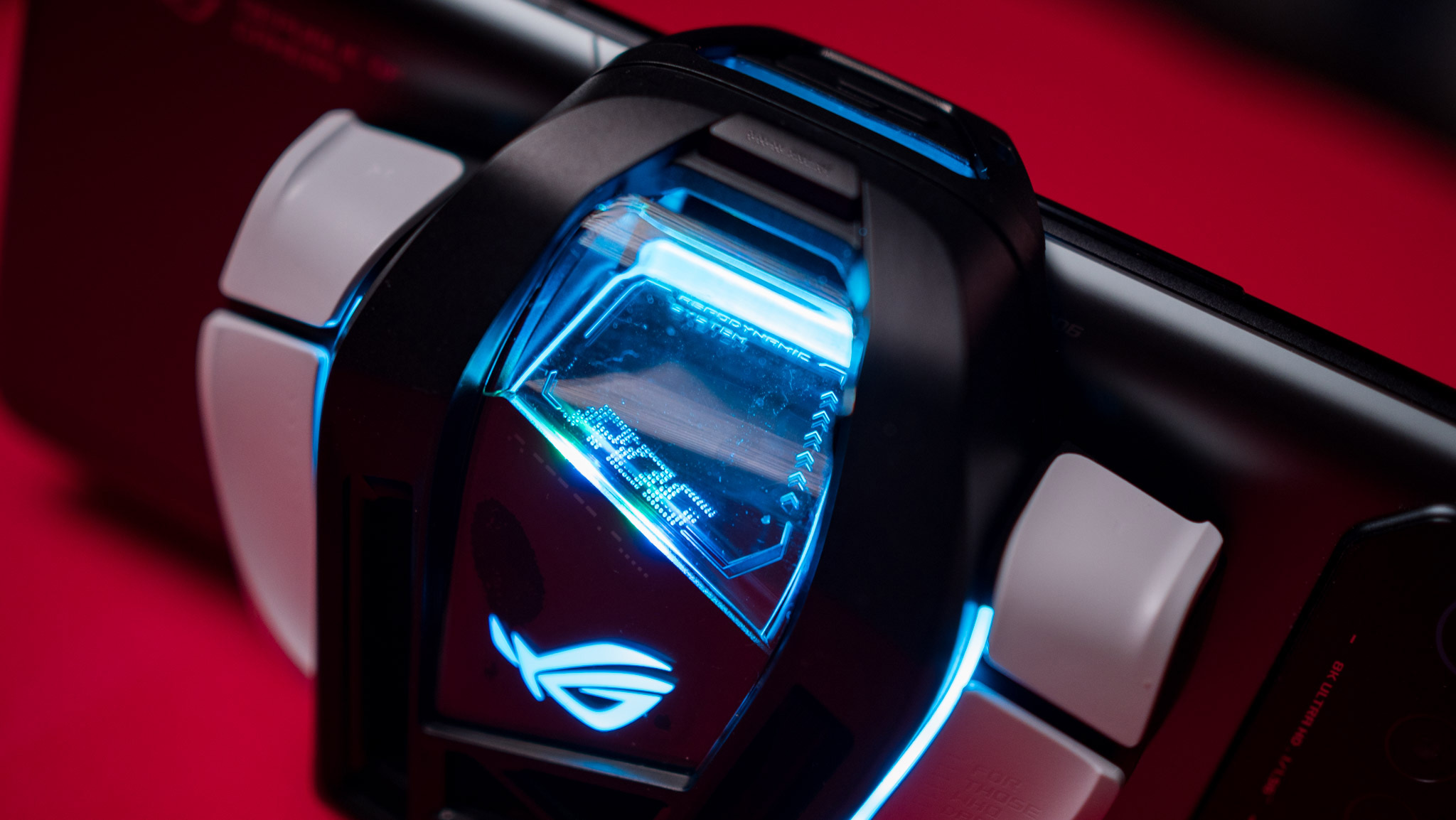
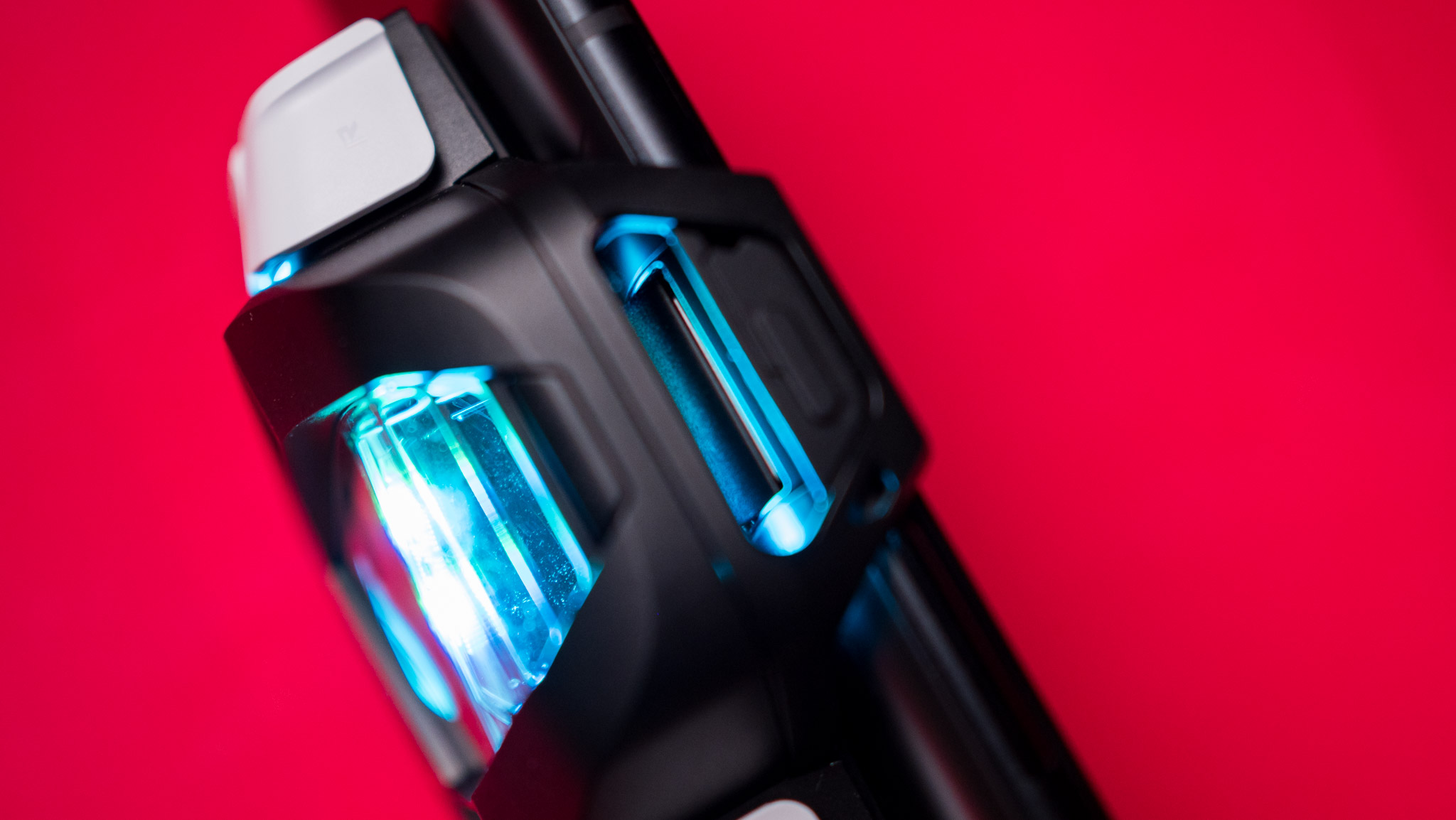
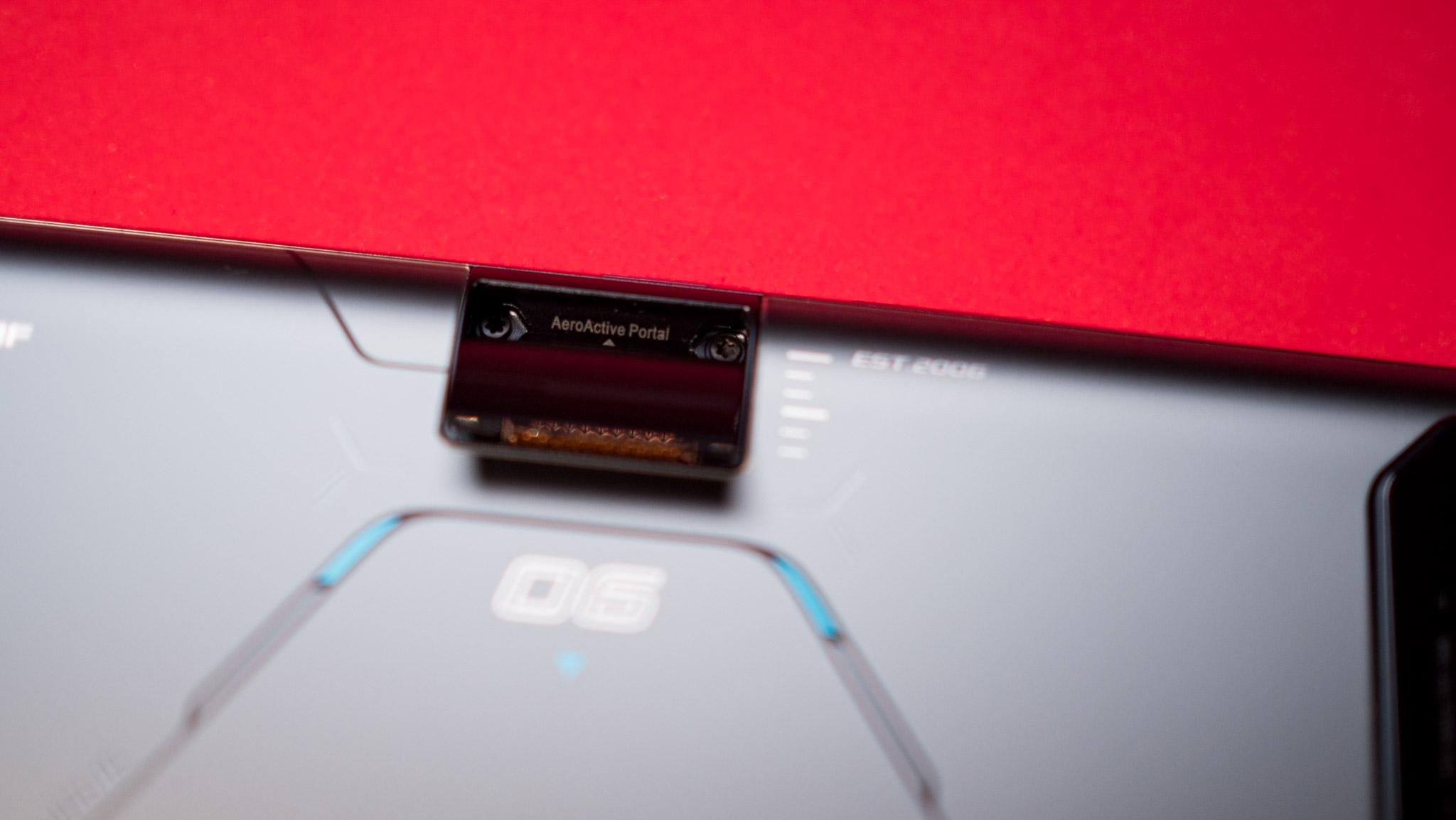
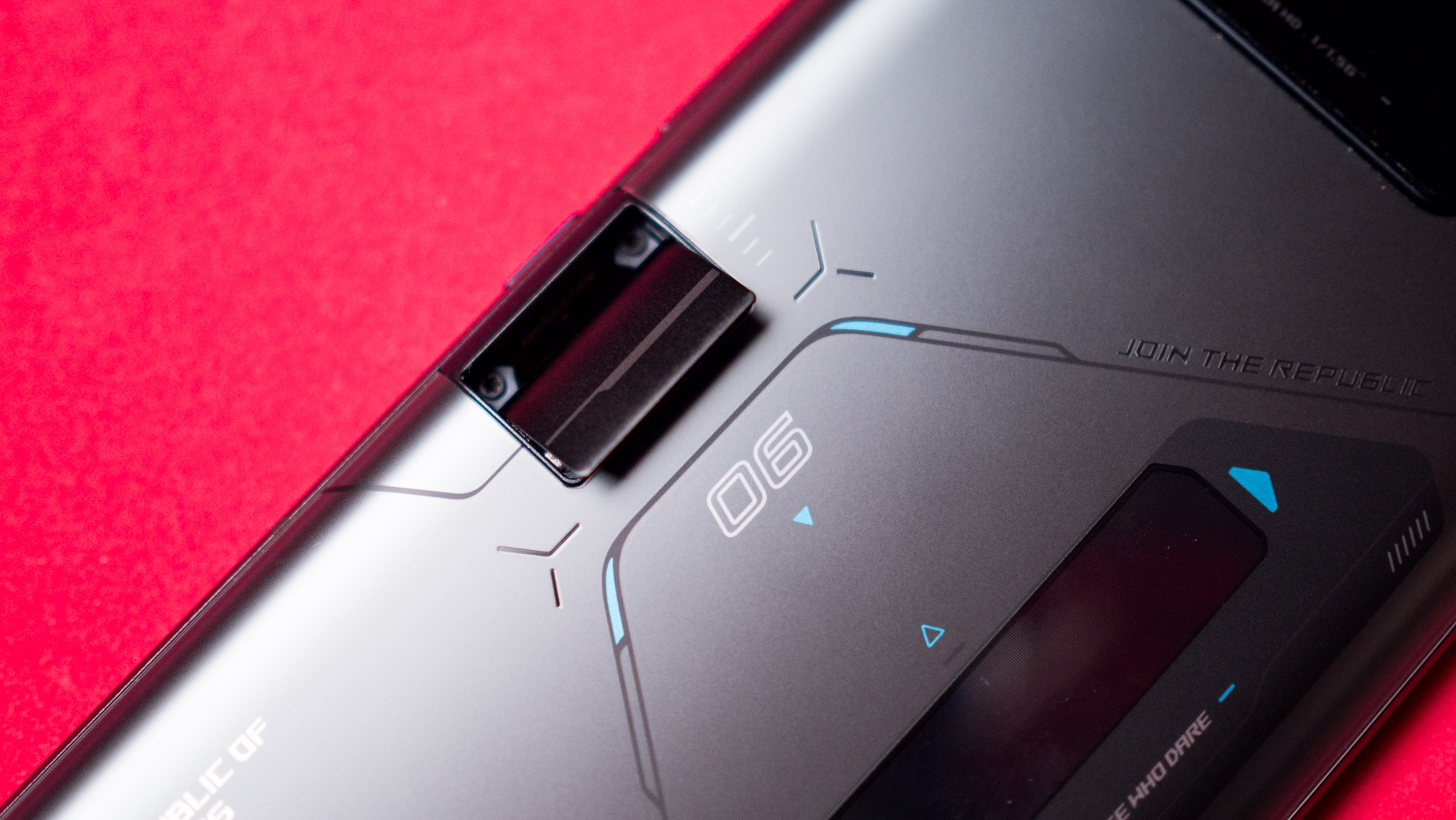
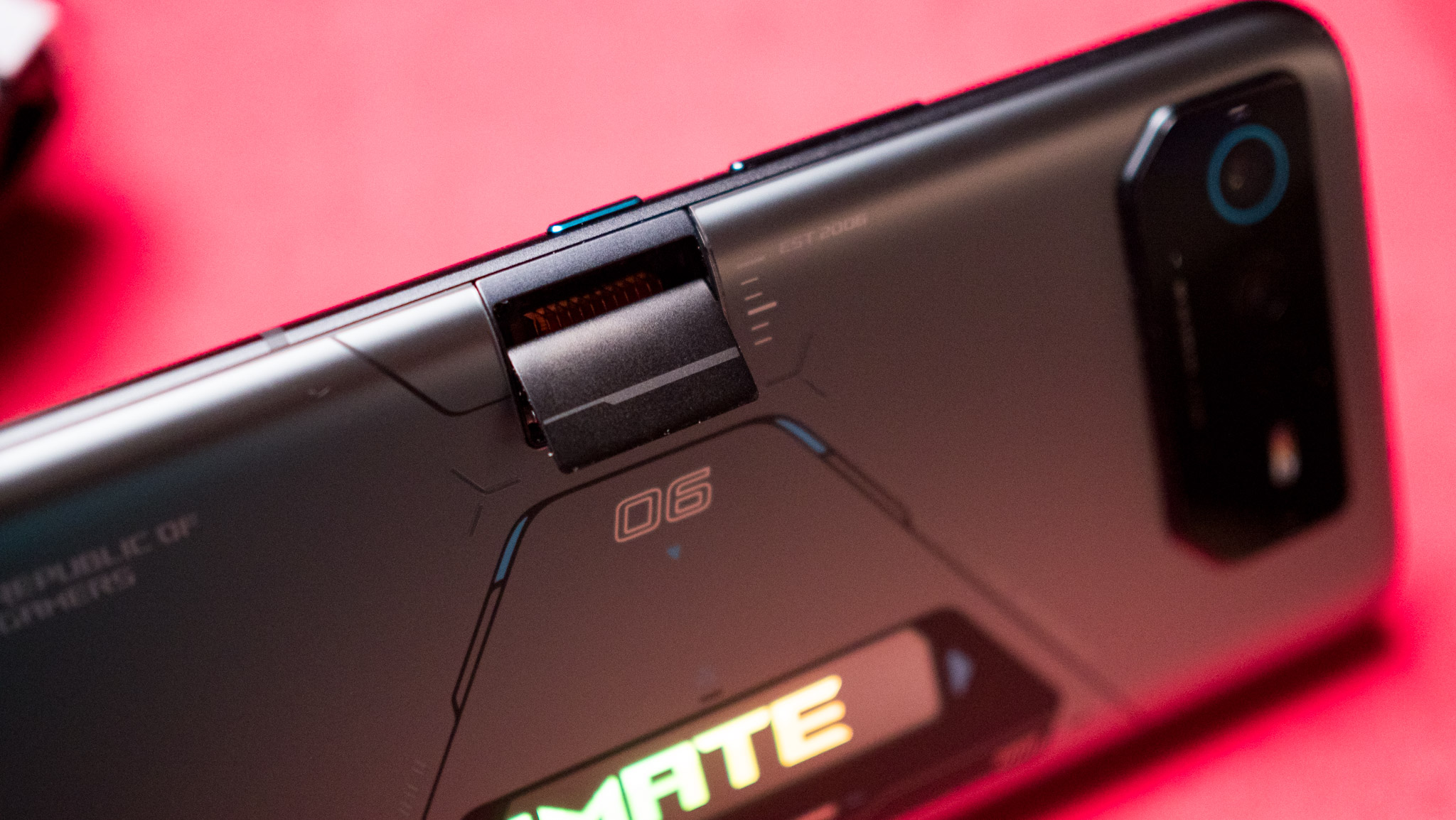
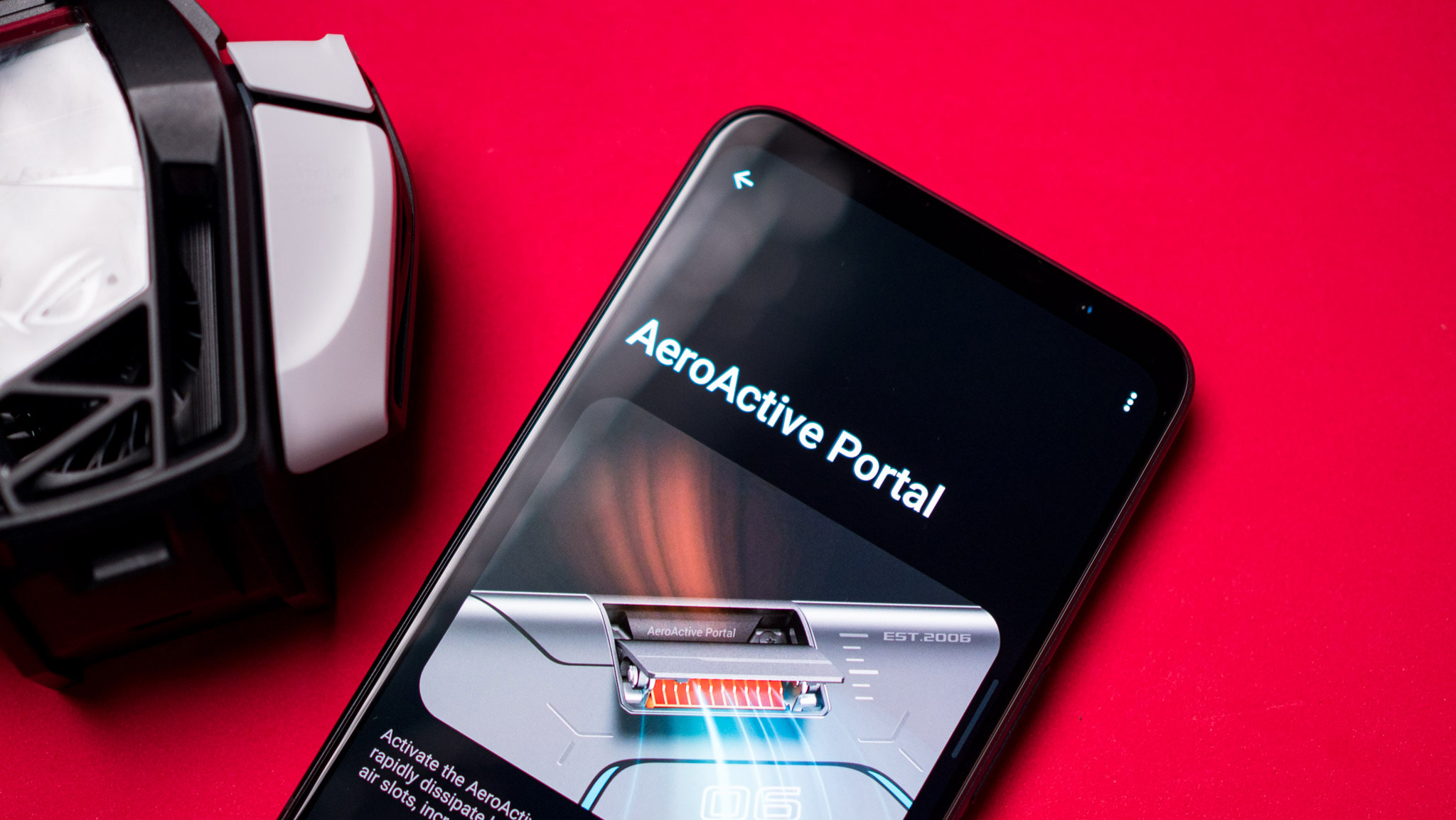
The hinge automatically closes if it detects that the phone is falling, and while it is designed to work in conjunction with the AeroActive Cooler, there's a way to manually unlock the hinge via the settings in Armoury Crate. This is solely for cleaning and maintenance, and in daily use, the hinge stays closed when the AeroActive Cooler is not connected to the device.
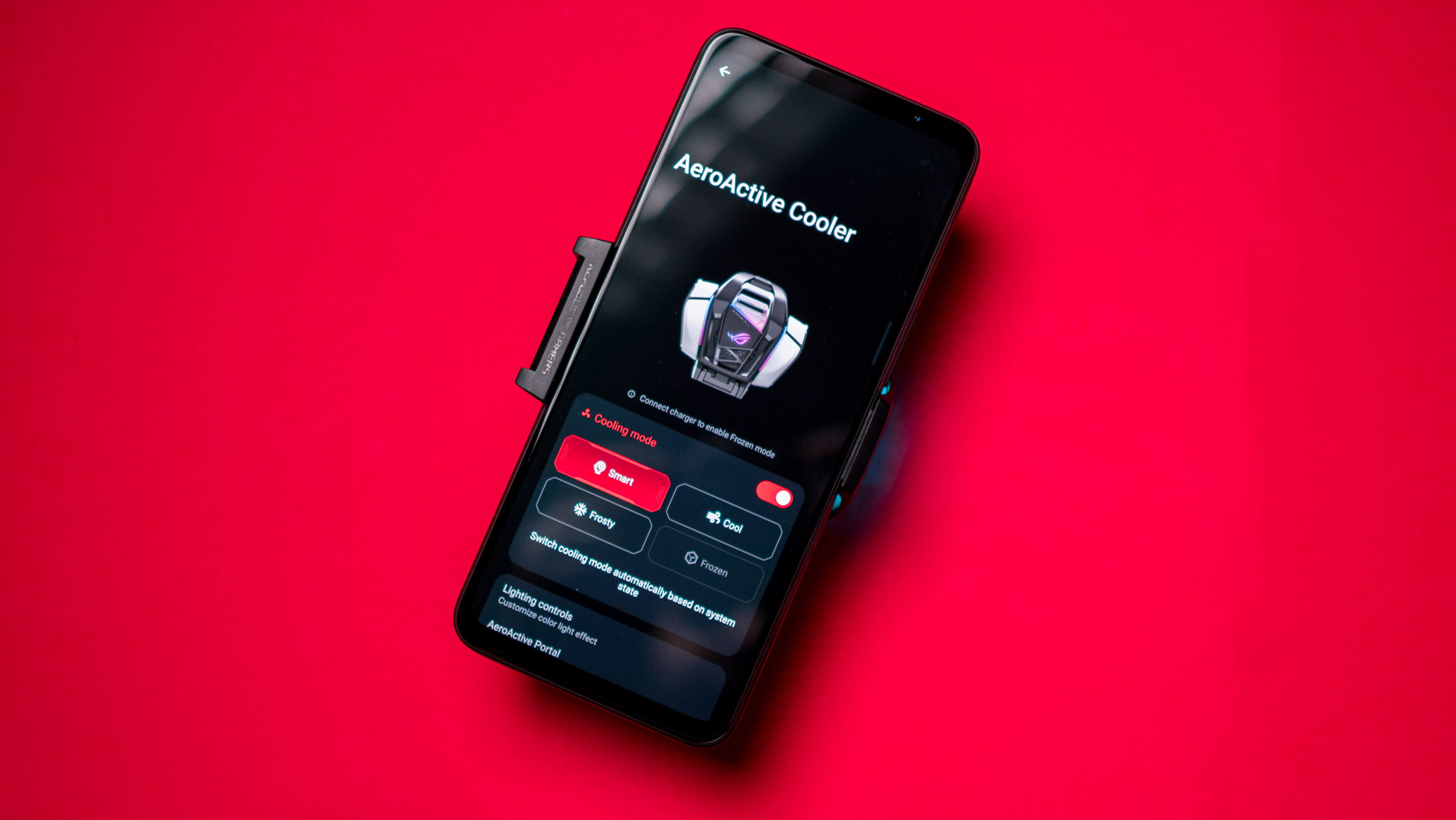
This is a novel way of reducing thermals, because the AeroActive Cooler by itself does a fantastic job in its own right. But when used with the hinge, there is a noticeable difference in thermal performance, with the Phone 6D Ultimate staying under 43 degrees Celsius even after gaming sessions exceeding one hour.
The best part is that the Phone 6D Ultimate includes the AeroActive Cooler within the package. The cooler has triggers of its own that can be customized for in-game actions, and yes, there is RGB lighting here as well. And an even bigger deal is that the device still retains its IPX4 water and dust resistance rating in spite of the hinge.
The fundamentals are unchanged from the ROG Phone 6 Pro
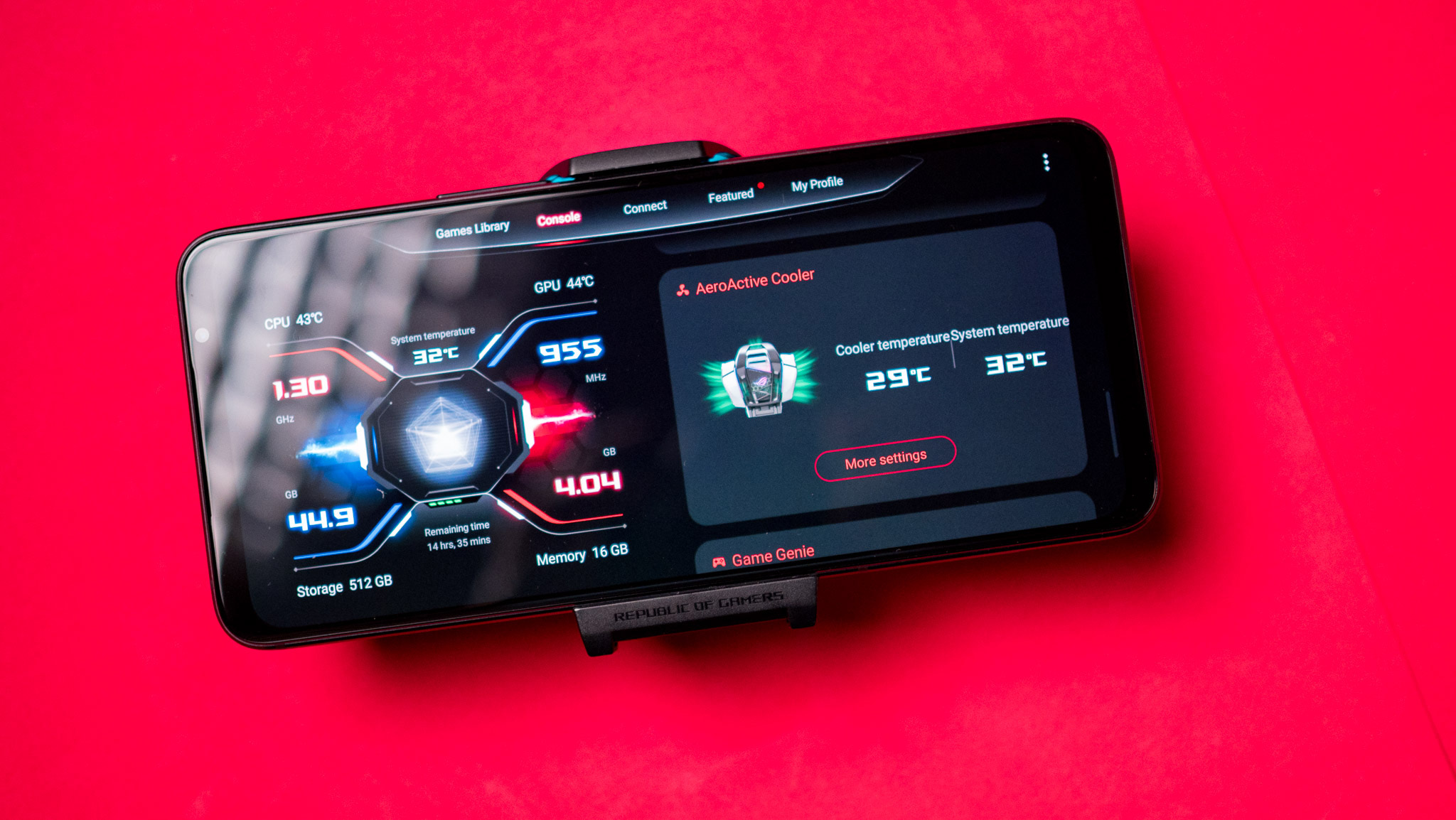
As for the rest of the hardware, you're looking at the same set of features as the ROG Phone 6 Pro. That includes a 6.78-inch AMOLED screen with 165Hz refresh, with the panel itself made by Samsung. The resolution is unchanged at FHD+, and there's a layer of Gorilla Glass Victus over the screen. There's still no dynamic scaling here, but you can switch between 60, 90, 120, 144, or 165Hz refresh, or set it to Auto and the screen will automatically change the refresh on the fly.
There's a massive 6000mAh battery this time as well, and it uses the same dual 3,000mAh cell configuration. It has 65W fast charging over the USB PD standard, and easily manages to last over a day without any issues. I didn't see any significant variance between the Qualcomm and MediaTek versions of the device, and in a similar set of use cases, both phones delivered similar battery longevity.
The software is also identical, with the device running Android 12 out of the box. You can choose between a gaming-focused skin or the standard ZenUI version that's delivers a clean interface, and ASUS says it will deliver two platform updates and at least two years of security updates.

Finally, the camera configuration is the same, with a 50MP Sony IMX766 lens joined by a 13MP wide-angle and a dedicated macro module. Like the battery situation, I didn't notice much of a variation in photo or video quality, and while the phone isn't in the same league as the Pixel 6 Pro, it manages to take great photos in most situations.
Overall, the ROG Phone 6D Ultimate is a great showcase for what MediaTek has to offer in the high-end segment. The phone absolutely holds its own during gaming and other intensive workloads, and manages to deliver similar battery life as its Qualcomm rival.
If you're interested in ASUS's gaming phones and want something a little different, the ROG Phone 6D Ultimate is a noteworthy alternative to the Qualcomm version. Of course, you will have to shell out a decent chunk of cash, with the 6D Ultimate debuting at £1,199 ($1,367) in the U.K. If you don't need the extras, the standard 6D is going up for sale starting at £799 ($910).

Harish Jonnalagadda is Android Central's Senior Editor overseeing mobile coverage. In his current role, he leads the site's coverage of Chinese phone brands, networking products, and AV gear. He has been testing phones for over a decade, and has extensive experience in mobile hardware and the global semiconductor industry. Contact him on Twitter at @chunkynerd.
